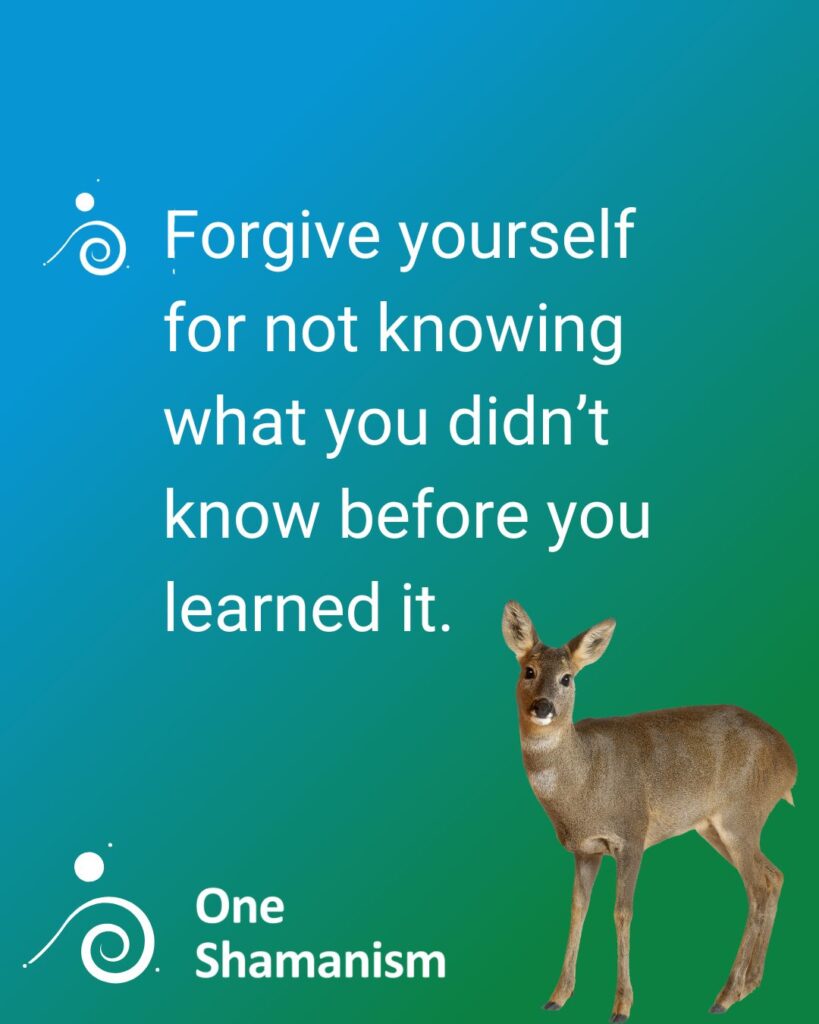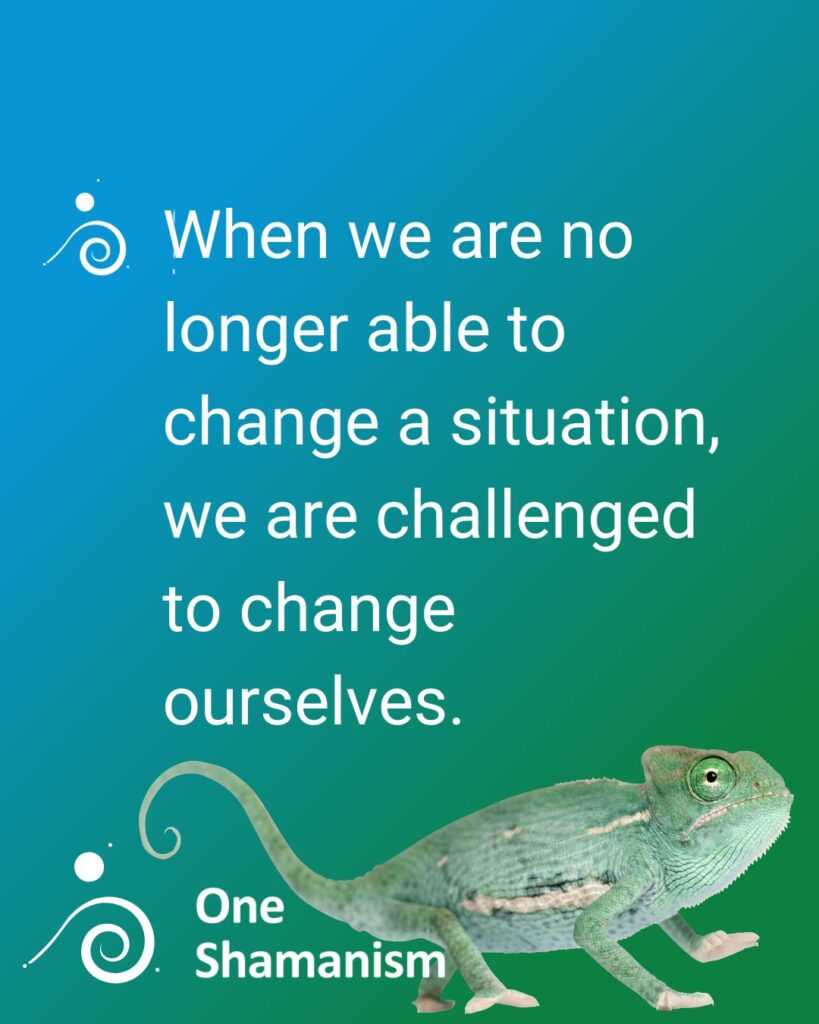This article explores the profound concept of letting go, something I’ve been deeply exploring within my own shamanic practice. It’s not just about releasing what no longer serves us; it’s about actively creating space for renewal. I’ll be sharing eight fundamental truths inspired by my own journey on the shamanic path, each accompanied by a transformative quote and a practical exercise to help you integrate these principles into your life.
I’ve found these to be incredibly powerful in my own life, and I’m excited to share them with you. We’ll look at releasing the need for control, shedding past identities, forgiving yourself, and embracing the unfamiliar. We’ll also delve into the importance of nurturing relationships that honor your spirit and closing old chapters with gratitude.
1. Release the Need for Control
“Surrender to what is. Let go of what was. Have faith in what will be.” – Sonia Ricotti

Attempting to control every outcome disrupts the flow of energy and causes internal resistance. Letting go of control means aligning with the wisdom of life, trusting that certain things are beyond our hands. Release the grasp on what you think should happen, and allow things to unfold naturally.
One of my teachers once taught me deeply about the power of compassion. The essence of their lesson was that, no matter the situation, it’s always worth approaching it with compassion—first and foremost for yourself, then for the situation, and finally for others involved. Compassion doesn’t necessarily mean that you must love everyone; instead, it’s about accepting things exactly as they are. When we approach life from a place of acceptance, we can see things clearly, without the urge to alter them. True release, my teacher shared, only comes when we stop trying to change everything around us. In this acceptance, we discover freedom and the ability to truly let go.
Shamanic Practice: Try a grounding meditation by visualizing yourself as a tree rooted deep into the Earth. Feel how solid and supported you are without needing to control external forces. Let yourself sway with the wind of life’s changes.
2. Let Go of Past Identities
“We must be willing to let go of the life we planned so as to have the life that is waiting for us.” – Joseph Campbell

In shamanic wisdom, life’s continuous flow mirrors the natural cycles of transformation, much like the ever-shifting seasons. For instance, if someone clings to an old identity of being “the caretaker” in their family, they may end up feeling trapped by this role, unable to express new aspects of themselves or to pursue personal growth. Shamans believe that by holding on to these outdated roles, individuals block the natural flow of energy and creativity. Letting go, on the other hand, allows the person to align with their evolving identity—perhaps as a healer, a teacher, or a creator—freeing them to step into new life chapters with a sense of openness and purpose.
In this way, we view each change as a shedding, like trees releasing leaves in autumn, to make space for new growth. It’s an essential process for embracing one’s current self and inviting the energies that are meant to be part of the present journey. Through this perspective, we learn that each phase, whether it’s a new strength, skill, or relationship, can only arrive if we’ve made room by letting go of what no longer serves us.
Shamanic Practice: Engage in a releasing ritual. Write down old identities or beliefs that no longer serve you and safely burn the paper, visualizing these aspects of self releasing into smoke, creating space for new growth.
3. Forgive Your Missteps
“Forgive yourself for not knowing what you didn’t know before you learned it.” – Maya Angelou

Shamanic teachings encourage seeing each mistake as a teacher, part of the unfolding journey. When we forgive ourselves, we dissolve the weight of regret and invite compassion into our lives. Embracing our past decisions with acceptance allows healing and transformation. These questions guide you through self-acceptance, nurturing an understanding of your journey, and opening a pathway for growth.
- What lesson is this experience offering me?
Each mistake holds wisdom, and by identifying the lesson, you can gain insights that serve your growth. - In what ways has this experience changed or strengthened me?
Often, difficult experiences bring about hidden strengths and resilience. Recognizing these changes transforms past regrets into sources of personal power. - How can I extend compassion to myself in this situation?
Embracing mistakes with self-compassion reduces self-criticism and invites a kinder, more balanced perspective. - What beliefs or judgments about myself have surfaced through this experience?
Our reactions to mistakes often reveal deeply held beliefs about worthiness or failure. Acknowledging these beliefs can create space for transformation. - How can I use this experience to support others?
Mistakes can foster empathy and compassion, making you better equipped to help others who face similar challenges. - What qualities or strengths do I want to cultivate moving forward?
By focusing on what you wish to embody in the future, you align your actions with your evolving self. - What does my inner guide or spirit (or a trusted guide) want me to know about this experience?
Inviting wisdom from within or from a guide can reveal powerful insights and offer guidance on your path to healing and transformation.
Also, incorporating the Hawaiian practice of Hoʻoponopono into self-forgiveness can deepen the shamanic process of releasing past mistakes and inviting transformation. Rooted in the Hawaiian tradition, Hoʻoponopono is a healing ritual for reconciliation and forgiveness, a four-step prayer that uses the phrases:
- “I’m sorry” – This phrase acknowledges any pain or imbalance caused by past actions, fostering an open heart toward one’s own suffering or toward others who may have been affected.
- “Please forgive me” – Asking for forgiveness signals a willingness to change, to release past grievances, and to mend the wounds caused by missteps.
- “Thank you” – Expressing gratitude for the opportunity to learn from the experience brings closure to the moment, transforming regret into a sense of appreciation for growth.
- “I love you” – The final phrase, an affirmation of love for oneself and the interconnectedness of all life, helps seal the intention to heal and move forward in peace.
Through Hoʻoponopono, individuals learn to forgive not just the self but also the circumstances, ultimately dissolving the emotional weight of the past. This act restores harmony and clears stagnant energy, allowing the soul to move forward and realign with the journey’s new direction.
Shamanic Practice: Practice self-forgiveness by journeying inward. Sit with a stone in your hand, asking it to absorb any guilt or shame. Place the stone in a natural spot, releasing it as a symbolic act of forgiveness.
4. Free Yourself from Unchangeable Realities
“When we are no longer able to change a situation, we are challenged to change ourselves.” – Viktor Frankl

A fundamental lesson is to differentiate between what can be changed and what cannot. While we may not control every situation, we can transform our reactions, finding inner peace and resilience. Acceptance of the unchangeable allows us to grow in strength. Like one of my teachers used to say: “If you cannot change it, let it go.”
To quickly determine if something can be changed, you can follow these steps:
- Assess the Facts: Take a moment to look at the facts of the situation. Is there a clear action you could take that would directly impact the outcome? If not, it might be beyond your control.
- Check Your Influence: Reflect on whether you have any influence over the situation. If it involves another person or an external event, consider if they are open to change or if the event is unfolding independently of your actions.
- Identify Acceptance vs. Action: Ask yourself two questions:
- “If I take action, is there a realistic chance this will change the outcome?”
- “If not, can I let it go and focus on my inner response?”
Shamanic Practice: Perform a release breathwork session. Inhale deeply, holding the thought of something you cannot change. As you exhale, feel yourself letting go, shifting your perspective from control to acceptance.
5. Discard the Fantasy of Perfection
“Perfection is not attainable, but if we chase perfection, we can catch excellence.” – Vince Lombardi

The path is sacred, even when it feels imperfect. Seeking perfection keeps us in a state of dissatisfaction, while embracing life’s unfolding nature allows us to live with authenticity. True progress comes from fully engaging with each step of the journey.
As I walk my own shamanic path, I’ve come to understand that the journey is never linear or free of struggles. In my apprenticeship, there have been countless moments when I’ve felt lost, uncertain, or frustrated. I’ve questioned my progress, wondering why things weren’t happening as quickly as I had imagined. But I’ve learned that these challenges are not obstacles; they are the sacred steps that guide me forward.
Each moment of doubt, every feeling of imperfection, is an opportunity for growth. The path is sacred not because it is flawless, but because it holds the lessons I need to evolve. There were times when I felt I wasn’t making any progress, I even split with my very first teacher, but now I see that these things were simply part of my journey. I learned that the path is about embracing each step—whether it feels like success or failure—with acceptance and reverence. It’s not about perfection but about being present and engaged with each step, knowing that each one brings me closer to the person I’m becoming.
It’s in the messiness of the process, the imperfections of the path, where the true teachings lie. As I continue my shamanic practice, I realize that growth doesn’t happen despite these challenges—it happens because of them. Through this unfolding, I’ve come to appreciate the sacredness of the journey, no matter how it looks at any given moment.
Shamanic Practice: Dedicate a day to doing something you enjoy without expecting perfection. This might be creating art, journaling, or practicing a skill with acceptance for all of its imperfections.
6. Embrace the Unfamiliar
“The only way to make sense out of change is to plunge into it, move with it, and join the dance.” – Alan Watts

Stepping out of familiar zones is essential for growth. Change often brings discomfort, yet it also brings new experiences, insights, and strength. Facing the unknown opens doors to transformation and deeper self-knowledge.
I remember a time in my life when I was hesitant to step outside my comfort zone. It was right before I left my corporate job. Deep inside, I knew there was more awaiting me beyond the familiar.
One day, the universe presented me with an unexpected challenge. It was the kind of opportunity I had longed for, but it required me to venture into the unknown, to leave the safety of the known world behind. The fear was palpable, and my mind raced with doubts. Would I succeed? Would I regret leaving everything I had known?
I was reminded of a teaching of one of my guides I had received during a journey: “The path of transformation always begins where the comfortable ends.” In that moment, I realized that staying in my comfort zone was not only limiting my potential but also keeping me from truly growing.
I took the first step, and though it was uncomfortable, something shifted. The fear that had held me back began to transform into excitement. With each new experience, my awareness expanded. I learned that discomfort was not a sign of failure but an invitation to evolve. Each challenge along the way opened doors to new insights, and I felt myself growing stronger, more resilient, and more aligned with my true self.
Looking back, I can see how stepping into the unknown was a crucial part of my spiritual journey. The discomfort that came with change was the catalyst for my transformation. It wasn’t always easy, but it was always worth it. The unknown had revealed the depth of my own strength, and through it, I became more attuned to the world around me.
Shamanic Practice: Take a journey into nature, visiting an area you haven’t explored before. Allow the surroundings to inspire you to embrace the unfamiliar, recognizing that new perspectives come from openness.
7. Nurture Relationships that Honor Your Spirit
“Surround yourself with people who make you a better person.” – Anonymous

IEnergy flows between people, and relationships are most powerful when they uplift and support our spiritual paths. Relationships that nurture your soul are crucial, while those that drain your energy may need boundaries or even gentle closure.
Reflecting on relationships, especially through the lens of energy flow and spiritual growth, involves asking deep questions that encourage self-awareness and discernment. Here are some questions you can use to reflect on the nature of your relationships:
1. How does this relationship make me feel?
- Does it uplift me or drain me?
- Am I leaving this interaction feeling empowered or exhausted?
- This question helps you assess whether the relationship supports your energy and spiritual growth.
2. What is the energy exchange between us like?
- Am I giving more than I am receiving?
- Is there balance, or do I feel taken for granted?
- Do I feel heard, seen, and valued in this relationship?
- Understanding the flow of energy helps determine if a relationship is balanced and nurturing.
3. How does this person support my spiritual path?
- Do they encourage me to be my authentic self?
- Do they help me grow, or do they hold me back from evolving?
- Relationships that support your spiritual journey should help you grow, not keep you in old patterns.
4. Are there boundaries I need to establish in this relationship?
- Do I feel overwhelmed by the demands or expectations from this person?
- Are there situations where I feel my personal space or values are being violated?
- Sometimes, establishing clear boundaries is essential for maintaining healthy energy in relationships.
5. What lessons am I learning from this relationship?
- How has this relationship challenged or supported my personal growth?
- Am I learning more about myself through this person?
- Reflecting on the lessons a relationship offers allows you to see it from a growth-oriented perspective, even if it’s difficult.
6. Is this relationship contributing to my peace or my stress?
- Am I consistently at peace when I’m around this person?
- Does this relationship bring more calm or chaos into my life?
- Evaluating whether a relationship supports or hinders your inner peace is crucial for making decisions on how to proceed.
7. Does this relationship reflect the values I want to live by?
- Are we aligned in terms of core beliefs and values?
- Does this relationship help me stay true to myself, or do I feel the need to compromise who I am?
- Relationships should ideally reflect your highest values and aspirations.
8. What do I need to heal or release in this relationship?
- Are there past hurts that need to be forgiven or let go of?
- Am I holding onto old patterns that no longer serve me?
- This question allows you to explore healing and release, which is crucial for moving forward in relationships.
9. Am I being true to myself in this relationship?
- Am I sacrificing my own needs to please the other person?
- Do I feel free to express myself authentically?
- Reflecting on whether you are showing up authentically helps assess if the relationship is healthy for you.
10. What do I need to accept or change in this relationship?
- Is there something I need to accept as it is?
- Is there something that needs to shift for this relationship to thrive?
- Acceptance of things we cannot change, along with a willingness to evolve what we can, is key to maintaining harmony.
Shamanic Practice: Reflect on your closest relationships, noticing who energizes and uplifts you. Honor these relationships, and if necessary, set boundaries with those that do not support your highest path.
8. Close Old Chapters with Gratitude
“Gratitude for the present moment and the fullness of life now is the true prosperity.” – Eckhart Tolle

I see life as a circle of beginnings and endings, and each chapter is purposeful. Closing old chapters honors the experiences they brought, even those that were challenging. This gratitude for what was allows new blessings to enter, creating fresh pathways forward.
One of the best exercises I still sometimes do in coaching is a simple one: Make a list of things, beliefs, or habits that are holding you back from fully stepping into your next chapter. One by one, now write down why you no longer need these things in your life and how releasing them will make room for new growth. This exercise is an opportunity to reflect deeply on the aspects of your life that no longer serve your highest good. By acknowledging them and consciously letting go, you create space for new possibilities, healing, and transformation.
Shamanic Practice: Write down memories or lessons from an ending chapter in your life. Create a gratitude altar by placing these written notes on a small cloth or in a special box, honoring the journey as you welcome the next phase.
Ritual for Release and Renewal
Try a shamanic ritual for release and renewal. Light a candle, set an intention for what you’re releasing, and visualize each of these elements lifting away from your body and mind, returning to the Earth. Afterward, sit in silence, letting the feeling of lightness settle in as you honor the openness created for new beginnings.









